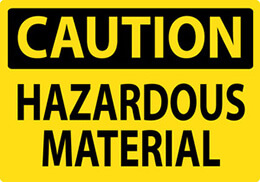Safe Exposure Limits For Different Substances in the Workplace

There are some situations where workers are exposed to certain substances that are considered harmful, but it has been established that a certain amount of exposure is acceptable.
The substance in question and the concentration of it will determine how long a worker can be exposed. There is a short-term-exposure limit, which is 15 minutes, and a long-term-exposure limit, which is an 8 hour duration. However, these established limits do not take into account any additional chemicals that may be in the environment and their their synergistic effects. Humidity and temperature which can also alter the harmful affects of certain substances as can any allergies or sensitivity that a particular worker has. In addition, these limits take into account only inhalation harmful effects.
Whenever possible, every reasonable effort should be made to avoid exposure to any harmful substance. But when this is not possible, exposure limits should be followed.
Examples of substances which have exposure limits includes things like: mercury, lead, carbon monoxide, carbon dioxide, organic solvents, isocyanates, noise that is 80 dB or higher, vibration (from machines that vibrate), etc.
However, there are also some substances where zero exposure is best, because any exposure can be harmful. In other words, the more the exposure the greater the risk. This includes things such as certain types of radiation and asbestos (crocidolite, amosite, and chrysotile).
To reduce exposure there are several steps that can be taken:
- Change the substance for something less harmful.
- Use as little as possible of the substance.
- Alternate with other workers.
- Create enclosures such as separate noisy machines within a wall.
- Maintain equipment so there is less exhaust fumes
- Have proper ventilation systems to remove harmful substances.
- Use personal protective equipment such as ear protection, respirators.
- Monitor the environment regularly to assure that the limits are respected.
- Monitor the workers, e.g. via blood tests, to assure contamination is controlled and illnesses are avoided.




Leave a Reply